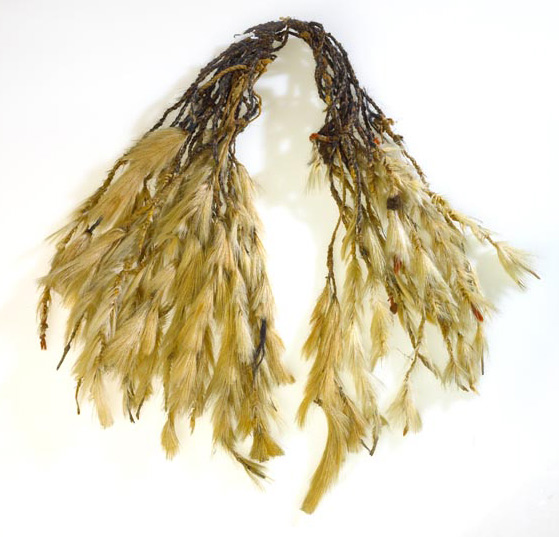 Ceremonial headdress, 1897
Ceremonial headdress, 1897
TLF ID R6687
This is a ceremonial headdress of the Wangkanguru (Wonkonguru) people, believed to have been made in 1897 in the north-east of South Australia. Called a 'charpoo', its main features are tassels made of rabbit-tail tips attached to a string made of kangaroo fur and hair. It is 41 cm long and up to about 24.5 cm wide. It was collected by ethnographer George Horne in 1921 from Mungerannie Bore, a small Aboriginal settlement east of Lake Eyre North.
